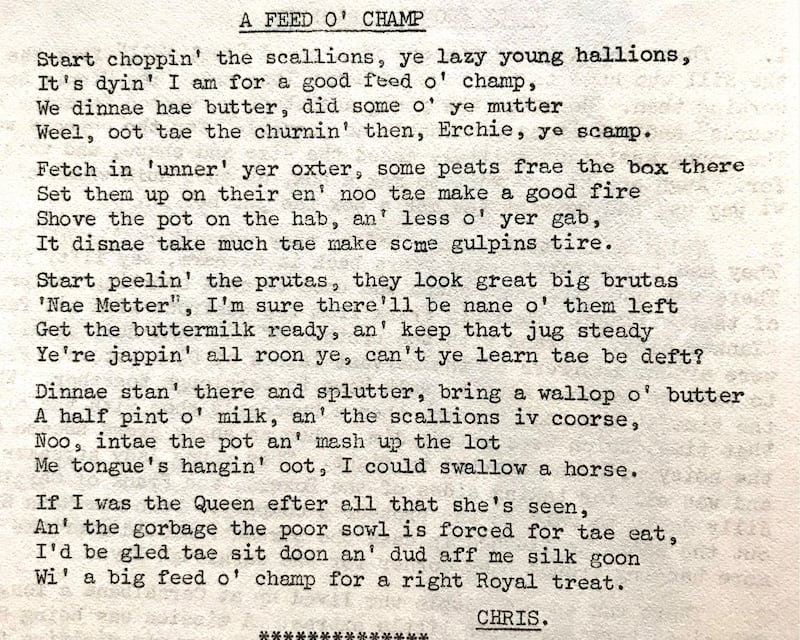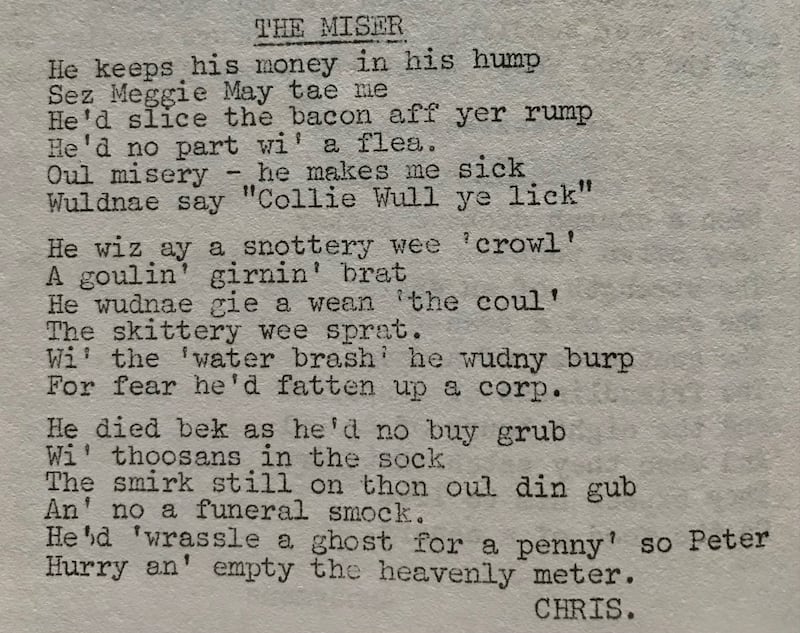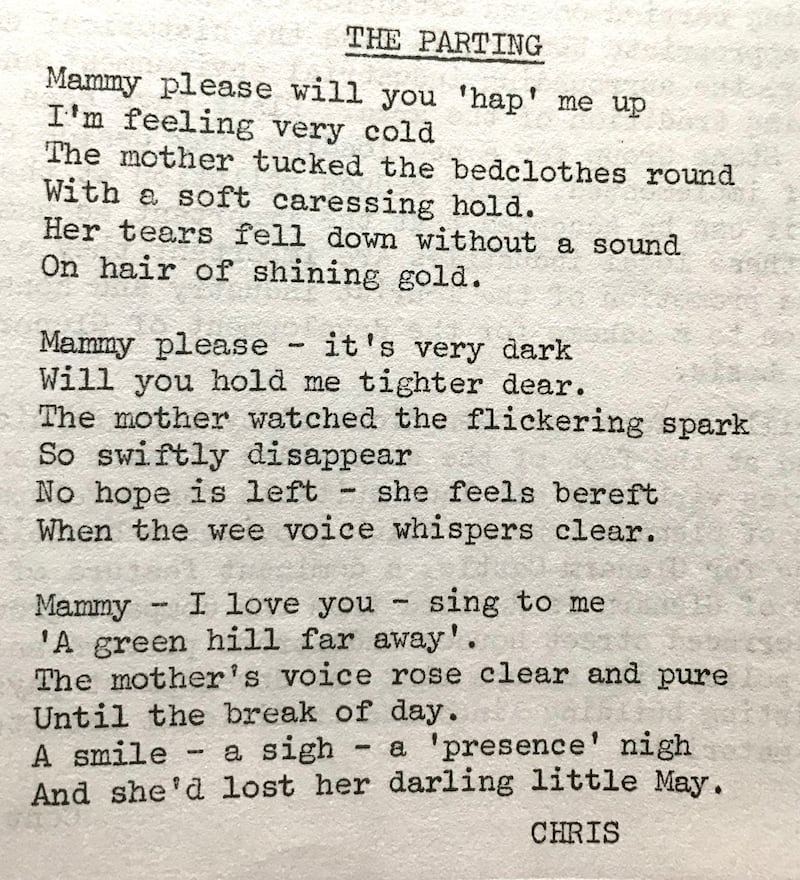There’s something about haunted houses, bad weather and vengeful ghosts that brings me incandescent joy. I love to scare myself. But gently, very gently, usually in my car, listening to The Classic Ghost Stories Podcast. A bonus feature of these podcasts is the author bio at the end of the reading, which I think you’d agree is an important addition. Because no one wants to be forgotten.
One such episode included a Victorian ghost story called The Open Door by Charlotte Riddell. Such is my stupidity, I assumed most Victorian ghost story writers were English. The result of an education focusing on British authors, usually male. Imagine my shock then, when the presenter said Riddell was from Carrickfergus – a wee jaunt up the road from my gorgeous Larne in Co Antrim – and in her day she was famous, on a par with Wilkie Collins. I was disgusted by my ignorance. Call myself a ghost story fan? Pah! I endeavoured to find out more.
Riddell was born in 1832, the youngest daughter of James Cowan of Carrickfergus, high sheriff for Co Antrim, and Ellen Kilshaw of Liverpool. After the death of her father, she and her mother moved to London. Riddell married Joseph Hadley Riddell in 1851.
She wrote many ghost stories and novels – Fairy Water, The Uninhabited House, The Haunted River, The Disappearance of Mr Jeremiah Redworth and The Nun’s Curse – all including supernatural elements. Yet despite her prolific writing career, she remains relatively unknown today. This sent me on a search to learn more about the women ghost story writers of this period.
Richard Dalby, in his introduction to The Virago Book of Ghost Stories, noted: “Over the last 150 years, Britain has led the world in the art of the classic ghost story, and it is no exaggeration to state that at least 50 per cent of quality examples in the genre were by women writers.”
Here’s what I find really fascinating. A sizeable proportion of these writers were Irish women. These include (and are not exclusive to) Katharine Tynan, BM Croker, LT Meade, Frances Browne, Letitia McClintock, Dorothy Macardle, Lady Wilde, Clotilde Graves, Elizabeth Bowen, Jane Barlow, Dora Sigerson Shorter and Beatrice Grimshaw.
I bought several ghost story anthologies and discovered that two more writers lived close to home. Rosa Mulholland (1841-1921) was born in Belfast, a novelist, poet and playwright. She started her literary career at a young age, attempting to publish her first book aged 15. Later, she received encouragement from Charles Dickens, who valued her writing and included her work in his periodicals.
Ethna Carbery (1864-1902), author of one of my favourite ghost stories, The Wee Gray Woman, hailed from Ballymena. Carbery was a journalist, writer and poet, best known for the ballad Roddy McCorley and the Song of Ciabhán. She wrote two cracking ghostly tales, the story aforementioned, and The Coming of Máire Ban which can be read in The Glass Shore anthology (New Island Press, 2016).
[ Children’s fiction: Ghost stories for Samhain and tales of female fearlessnessOpens in new window ]
In my quest to revive interest in these forgotten writers, I applied to undertake a PhD exploring the representation of women in modern society through the metaphor of the ghost. I also wanted the ghost story tradition to live on through my own writing. I felt it was important to both the cultural heritage of Ireland and the ghost story literary canon, which largely focuses on the achievements of men.
Sadly, I didn’t get a place on the PhD program. I didn’t even get an interview. Sigh. Ghosted, again. I was a little upset, but cracked on with my own short story writing regardless. A few were published, but after several rejections for the whole manuscript, I did what I do best: I gave up. I haven’t written a ghost story in well over a year. It looks like the genre isn’t going to be revived in Co Antrim any time soon. But at least I can write a wee bit of non-fiction to cheer myself up.
A ghost in the attic
It is here my reportage takes a quirky turn. Purely by accident, I discovered my very own ghost in the attic, in a set of journals belonging to the previous owner of my house. Stay with me here, I haven’t lost it. This will all make sense in a moment.
I attended a talk at Ulster University about John Hewitt’s Rhyming Weavers anthology.
At the talk, Dr Frank Ferguson spoke about John Hewitt as an archivist, and suggested we check our attics for lost material because you never know what you might find.
I recollected seeing old copies of The Glenarm Journal in my attic, a local publication produced between 1973 and 1983. There were 68 editions and their covers were designed by Sam McLarnon, a landscape artist well known for his paintings of the Antrim coast. The previous owner of my house, Kay McMullan, was secretary of the Glenarm Improvements Committee, who published the journals, and she’d meticulously saved every edition.
The journals include village news, poetry, jokes and recipes. Many of the poems are funny, but they also address serious topics: mixed marriages, child mortality, the Troubles, the religious divide and domestic violence. I investigated further but couldn’t find a complete set anywhere. Not in PRONI, the local library or museum. I feel like their caretaker now, and I’m not entirely sure what to do with them.
What really intrigued me about these journals was a serial contributor, a poet with the pseudonym “Chris”, who featured in almost every edition, producing more than 150 poems. Their work is complex; funny, sad, joyful, thoughtful and, at times, just downright entertaining. They reminded me a little of my own writing, I suppose. I wondered who this Chris might be and thought it unfortunate such a talent was buried in my attic. I didn’t even know the writer’s real name.



After an internet hunt and several emails, I finally discovered the identity of said mystery poet, who was not a man, but a woman. A woman who hoped to have her own poetry collection published, but passed away before it happened. Garry Wilkinson told me more about his aunt, writer Stena Murray (with thanks to Alan and Heather Kennedy for additional information).
“Stena was born Christina Murray, in either 1902 or 1908. Records couldn’t be made out and she died in November 1994. She was one of 10 siblings to Samuel and Janet (Jessie) Murray from Scotland. Three siblings died young. Stena was born in Glenarm and my mother was named after her. The family then lived in Toberwine Street and her father was a saddler to the estate.”
I learned Stena was a bit of an adventurer. “She worked as a nanny in Israel and the US and when she decided to return to Glenarm she instructed a solicitor to purchase a house in the Vennel. When she arrived back she had accidentally bought two semis! She also worked at Redhall along with Annie Shanks, daughter of Frances Murray.”
Though Stena never married, there were those who tried to woo her. Garry explained, “During the war she was proposed to twice by an American GI. Some years later I met an American guide at Glenarm Castle who was that GI’s daughter. She still had his letters of proposal.”
I asked Garry if he had any anecdotes which might tell us more about her. “You dared not say you liked anything in Stena’s house or you came home with it. She invited my wife and I up to choose a wedding present and there was a hideous vase or table and chairs. We hastily liked the table and chairs.
“She was a very generous woman and had very good relations with the family in Glenarm Castle. She walked up to the forest every day to collect firewood, even in her 80s. Her front and back door were never locked as she used to say if anyone stole anything their need was greater.”
Garry shared another fond memory. “For her 80th we took her to the Drumnagreagh Hotel restaurant. The waiter brought out loads of veg and put them on a lazy Susan. She opened her handbag and took out a plastic bag, emptied all the veg in and said that would do her all week, not realising it was for all of us.”



I’ve provided photographs of some of Stena’s poems for this article, and in the spirit of things, I’ve included one entitled The Banshee. As far as the journals are concerned, I plan on donating them to a museum, perhaps PRONI, so they can be made available to everyone. For some reason, I haven’t handed them over yet. I suppose I wanted to move Stena out of the attic and into the sun first.
Final thoughts. Often, I find writing depressing and wonder why anyone does it. Much of the time it’s utterly demoralising. It’s hard enough to get published and then when you do, your books end up in skips, charity shops, attics – or, worse, the blue bin. But it’s not all doom and gloom. If we take the time to read an unknown name and move beyond the Tesco top 10, we might reduce the representation gap. Perhaps we could even write an article about these authors. Maybe it’ll get published in The Irish Times, and they won’t really be forgotten after all.











